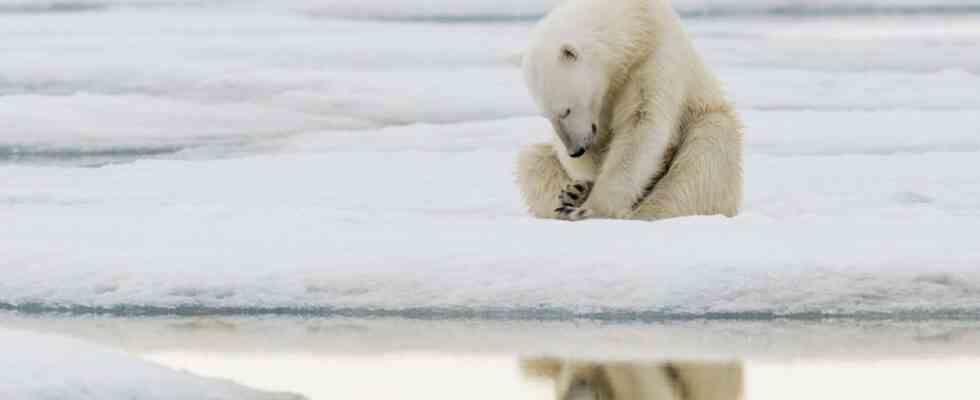When April meets the polar bear for the first time, the girl experiences something that Aristotle, Kant and the likes of aesthetic theory would describe as the sublime: “Slowly she looked up. And there on the beach, about fifty meters away from her, was the most magnificent creature she had ever seen.” A male polar bear, a little emaciated but still huge, stands in front of her. He’s impressive, dangerous. And he’s all alone. “‘You’re incredible,’ she whispered, and a tear trickled down her face.”
Friendship with an animal, especially a wild one, is a classic topos in children’s literature. But British author Hannah Gold makes something new out of it in her novel The Last Bear. Something exciting and contemporary. Her book is about climate change, the threat that humans pose to animals, and a child’s fantasy that Gold takes so seriously that its actually realistic narrative repeatedly turns into the fantastic. April rides the bear across a polar island, he shows her his cold, magnificent world. He teaches her how to yell like him.
April learns to communicate with him. She manages to do this because she is a particularly empathetic child. This is an advantage when talking to animals. It’s a disadvantage when you have a father like Aprils. He’s a meteorologist, introverted anyway, and since the death of April’s mother has become so withdrawn that he hardly notices his daughter. April understands this and therefore she does not rebel, but surrenders to her loneliness in order to spare her father. It’s the drama of the gifted child.
“The Last Bear” is a wonderful adventure story, full of emotion and suspense
Together, the two move to “Bear Island” for the summer months. It really does exist, halfway to Spitsbergen as seen from Northern Norway. Despite its name, there are no bears there. The vanished pack ice has cut them off from the rest of the Arctic. The animals don’t come anymore. But in The Last Bear, there is only one left before the ice melts. He becomes April’s friend during the lonely months on the island. In the end she has to muster all the courage to save him.
“The Last Bear” is a wonderful adventure story, full of emotion and suspense. The award-winning graphic artist Levi Pinfold has illustrated them with impressive pencil drawings that show the bear as Hannah Gold describes it: not as a cute cuddly animal, but as the wild, majestic par excellence. As something that should actually be completely independent, yes, threatening – and that has made people threatened. The story of April and the Bear ends on an upbeat note, luckily for the young readers. Anyone who reads it as an adult will be sad. Because this ending seems as fantastic in the face of reality as the idea of a girl riding on the back of a polar bear.
Hannah Gold: The Last Bear. Illustrated by Levi Pinfold. Translated from English by Sylke Hachmeister. From Hacht Verlag, Hamburg 2022. 300 pages, 18 euros. From 10 years on.

